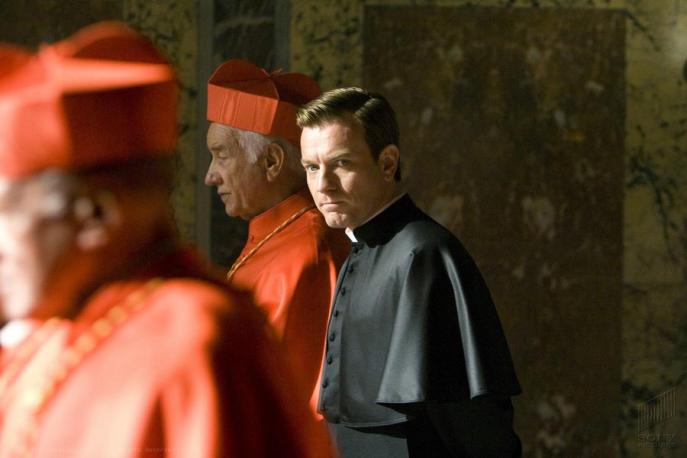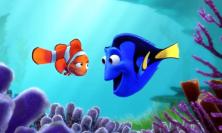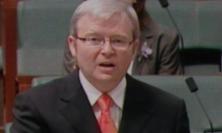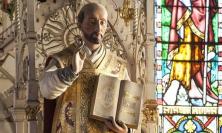Director: Ron Howard
Starring: Tom Hanks, Ewan McGregor, Ayelet Zurer
UK Release date: 14 May 2009
Certificate: 12A (138 mins)
As we all know – and let’s get this one memorised – the Catholic Church is anti-science, anti-art, anti-dissent, anti-modern, anti-change and anti-instinct. Its hierarchies turn humble men into vicious power-grabbers, grubbing around in the incense smoke for the opportunity to wear a nicer tassel. But what I have always wondered, in between the paroxysms of guilt that accompany such ignorance, is what the Church’s position is on anti-matter. Fortunately, Church historian Dan Brown has come to shed some light on this topic with his latest documentary, Angels and Demons.
Well – you get the point. In fact, it’s me that is being unjust. Angels and Demons is fabulously silly, and the Catholicism one witnesses is the symbol-laden world of ritual that energises Brown’s storytelling, but there is very little that could provoke offence in even the most sensitive believer. L'Osservatore Romano has produced a calm review. If any party needs to justify itself, it would be the scientists at CERN, who, let’s not forget, almost BLEW UP THE WHOLE WORLD last year, and who in the film are responsible for creating the anti-matter time bomb that threatens to destroy Rome. And the ending features a surprisingly tender portrait of the inauguration of a new Pope, leaving the audience with the suspicion that maybe all those Catholics aren’t so bad after all.
What room amidst the brocade for a storyline? I can’t remember exactly how the anti-matter time bomb is linked to the resurgence of the Illuminati and the kidnapping of four Cardinals, but it sure was a pretty exciting reason. Much of the film is spent in transit across Rome or in frantic analysis of some ancient symbol; in between we are treated to the garnishes of garish Church history that Brown has so popularised. It’s an energetic, afternoon-filling thriller.
So should we as Catholics shrug off the film as being on a par with say, Indiana Jones? Not quite, I would suggest. The film may be insubstantial (‘ephemeral’, is L'Osservatore Romano’s lovelier way of putting it) and anyone who bases their opinions of Catholicism on it is probably not inclined to subtler analysis anyway. But it does raise the question of where are the mainstream films, the novels, the art, that do show what lies beneath all the symbolism? Doubt was a thoughtful film, but its aesthetic of uncertainty is hardly a depiction of what every faith-filled life is like. Most common is what Larkin called our ‘almost-instinct’, seen in Is Anybody There?, for example, or the ‘something else somewhere’ philosophy that accompanied the public fascination with Jade Goody’s death. Any deeper faith invariably seems to be completely absent or subsumed into a vague sense of things being ok, somehow. When we talk about mainstream film we are almost always talking about a depiction of faith that is either non-existent or poorly explained.
There is also the warning about what happens if tradition is badly explained. Some of the Catholics in Angels and Demons are ossified by their dependence on tradition and ritual. All that symbolism is a form of communication – human attempts to express devotion, awe, unknowingness – but when the symbols are detached from their meaning, then comes confusion. Divisiveness between those who see protecting tradition as protecting truth and those who see tradition as strangling true expression: it’s a huge challenge to modern catechesis to find the firm line between these oppositions, when symbols come already tainted with the extreme connotations of filmic Catholicism. From the outside looking in, one is reminded how strange and mad some of Catholicism’s rituals and beliefs must seem. We may be pleased by this strangeness in the sense that it distinguishes us from the morality and lifestyles of ‘wider society’, but it is also vital to remember how odd some of the traditions of expressing belief can appear to someone cautiously approaching the faith for the first or second time.
So Angels and Demons doesn’t look like it will provoke the same kind of response as The Da Vinci Code. But it may be another timely reminder of the cultural ground in which conversations between believers and non-believers, and amongst believers themselves, really take place.
Nathan Koblintz
![]() Visit this film's official web site
Visit this film's official web site






